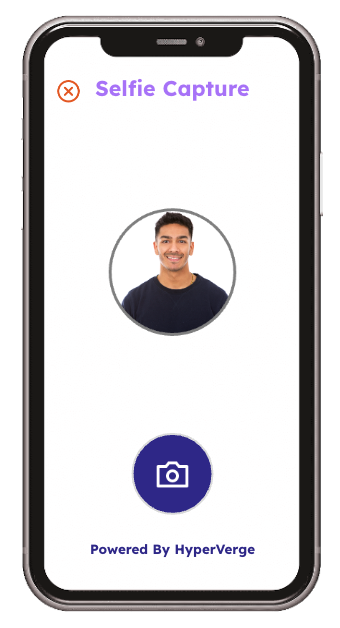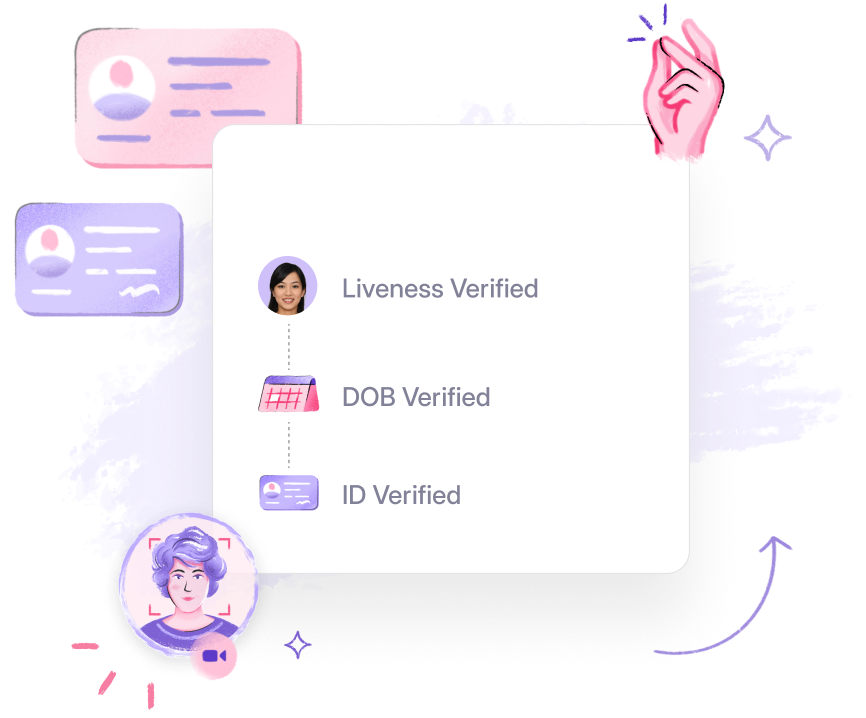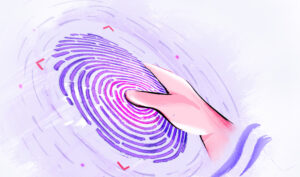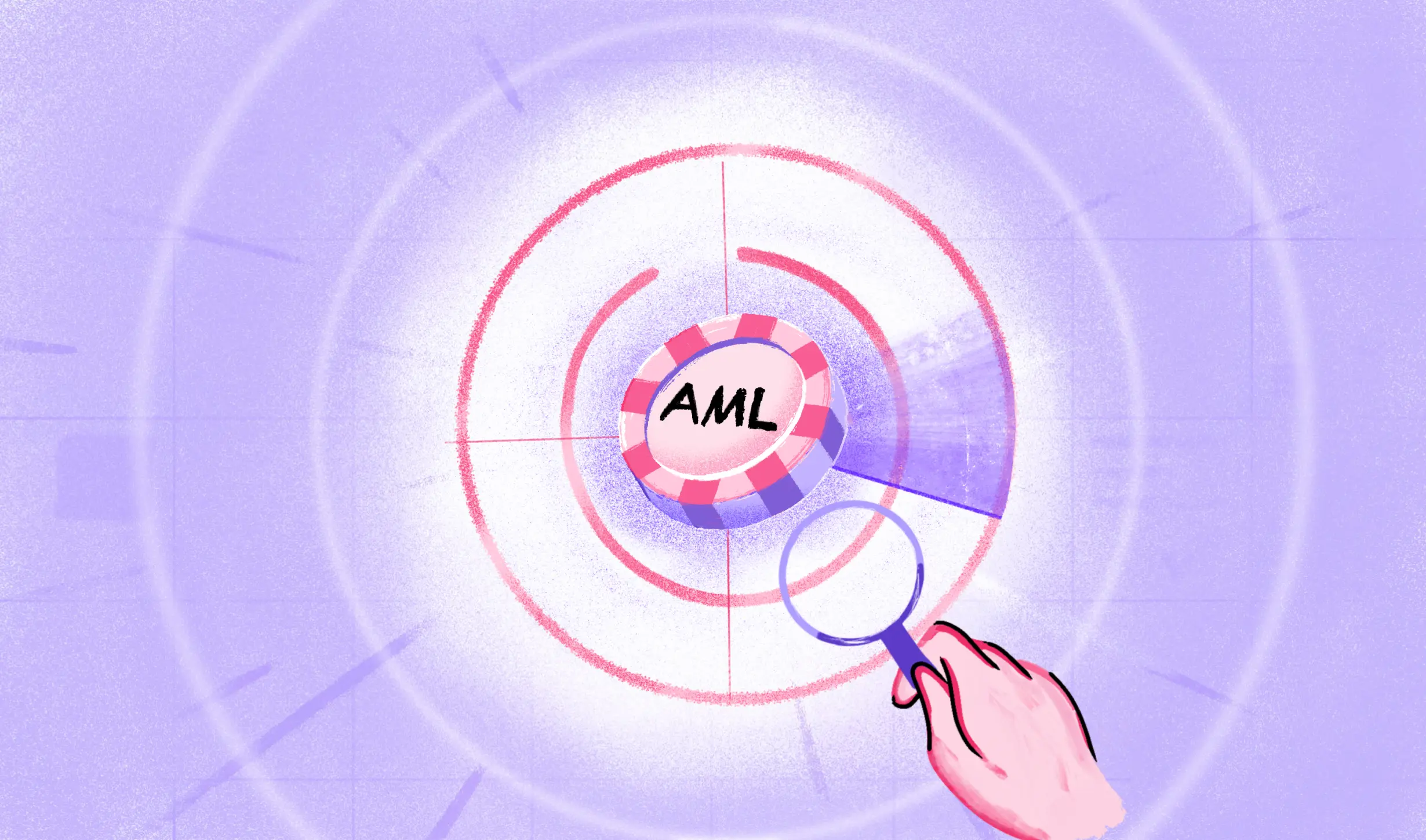Biometric technologies continue to transform our personal and professional lives, offering unprecedented levels of security and simplicity.
In this blog, we’re delving into the fascinating future trends and use cases of biometric identity verification systems, which are poised to redefine identity verification and security in the tech world of tomorrow.
The state of biometric technology today
Biometric technology leverages unique physical or behavioural characteristics such as fingerprints, facial structures, voice patterns, or iris scans to verify and authenticate individuals’ identities. Biometrics technology, such as facial recognition and voice recognition, is fast becoming an integral part of various sectors for several reasons.
First, biometrics authentication methods offer an enhanced level of security, as physical and behavioural attributes are difficult to replicate compared to traditional methods like passwords or ID cards. Next, they provide convenience. One does not need to remember complicated passwords or carry additional items for identification. Third, biometrics enable quick access and authentication, saving time and reducing operational costs.

Additionally, these technologies also offer a possible solution to the growing concern of identity theft, a prevalent issue in the digital age. Biometric systems can uniquely link an individual to their identity, making it more challenging for fraudsters to impersonate others. As such, the future of biometrics looks promising, particularly in the realm of identity verification.
Benefits of biometric technologies
The future of biometrics looks bright, with numerous benefits for both individuals and businesses. Some of these advantages include:
- Increased security: As mentioned earlier, biometric technology provides a higher level of security compared to traditional methods. This is because the unique physical characteristics or behavioural patterns used are challenging to replicate.
- Enhanced user experience: Biometric scanners eliminate the need to remember complex passwords, making biometric technology convenient for users. Also, they allow for quick and easy access to devices or systems.
- Cost-effective: Biometric technology can save businesses money in the long run by reducing operational costs associated with traditional methods of identification such as ID cards.
- Better fraud prevention: It’s difficult for identity thieves to replicate someone’s biometric data and individual identity. This can help prevent fraud and protect confidential information.
- Increased efficiency: Biometric technologies can streamline processes by eliminating the need for manual identification methods, saving time, and increasing productivity.
Related read: How to choose a biometric verification system?
Applications of biometrics
Biometric technologies are evolving rapidly, and these advancements promise to shape the future of identification. Here are some of the most common modalities:
- Face Recognition: Utilising unique patterns and shapes found in human beings, such as a person’s face, this modality has seen continued growth due to its non-contact nature and widespread use in smartphones and surveillance systems. Its primary use cases involve unlocking devices and identifying persons of interest.
- Fingerprint Recognition: One of the most well-known modalities, it identifies individuals based on the unique ridges and valleys present in their fingerprints. Commonly used for crime scene investigations, fingerprint scanning is also becoming standard in many devices for user authentication.
- Iris Recognition: This is a highly secure modality that uses the unique patterns found in the coloured ring of the eye, the iris. This type of biometric scanning is used in high-security applications like border control or bank account access, where high levels of accuracy are required.
- Palm Print Recognition: Similar to fingerprint recognition, this modality uses the unique patterns found in a person’s palm print. This method offers a high level of security and is typically used in law enforcement or high-security applications.
- Signature Recognition: This modality analyses the physical activity of signing, like the stroke order, pressure, and speed, making it more secure than merely comparing visual signatures. Common use cases include document verification and banking transactions.
These modalities not only improve the security of identity verification but also offer a more user-friendly and efficient alternative to traditional methods. Moreover, each modality can complement the other for even more robust biometric systems.
For example, a system that combines face and voice biometrics features could be used for secure access to sensitive areas of a building. Or a combination of fingerprint scanning and iris scanning could be used at border control checkpoints for strong identity verification.

The challenges
There has been rapid growth in the adoption of biometric technologies. Simultaneously, expectedly, there has also been a spurt in the threats and challenges to this technology. Some of these challenges include:
- Spoofing. Image-based biometrics are inherently susceptible to spoofs that can fool systems such as facial scanners. Although AI technologies are helping counter these challenges, even iris patterns have been spoofed under test conditions.
- Deepfakes. A deep fake is a picture or a video that has been altered to look real. Such fake videos use voice spoofing and video editing to create videos showing an individual saying something offensive or illegal. Deepfakes have caused social disturbances and have been used to fool facial recognition systems.
- Ethical Issues. Modern biometric systems collect significant amounts of user information in the process of identity verification. The secure storage and authorized use of this information present several ethical concerns for regulators.
Explore our deepfake detection solution and stay ahead of fraudsters!
The future of biometrics: trends and advancements
As we stand on the cusp of a new era in technology, the realm of biometrics is not untouched. The traditional methods of verification are continuously being refined, and new modalities are being discovered. As per a report, the market for the next generation of biometric technology is expected to grow to USD 94.23 billion by 2028.
The next section focuses on the future of biometrics, dissecting the upcoming trends and advancements that stand to redefine the landscape of identity verification.
Read more: Liveness: A key pillar to a biometric future in a post COVID-19 world
Banking and financial services industry
Biometric authentication has already made its way into the banking and financial services industry, with many banks implementing biometric technology for customer authentication. As data breaches become more prevalent, financial institutions are looking for ways to enhance security measures while also improving efficiency.
One of the upcoming trends in this sector is the increasing adoption of behavioural biometrics, which uses machine learning algorithms to analyse user behaviour for fraud detection. This could include analysing typing patterns, mouse movements, and other behavioural traits to confirm the identity of the user.
Another potential trend is the use of biometric cards or wearables for contactless payments. These devices would store the user’s biometric data and would not require a PIN or signature for transactions, making them more secure than traditional methods.

Healthcare and biometrics
The healthcare industry is also expected to see increased adoption of biometric technology in the near future. One potential use case is patient identification, where biometric data collected, such as fingerprints or facial recognition, could be used to accurately identify patients and access their medical records or health insurance details.
Biometrics can also be used for remote patient monitoring, where sensors can collect biometric data such as heart rate, blood pressure, and oxygen levels to monitor patients’ health remotely. This could improve patient outcomes and reduce the need for in-person appointments.
Additionally, biometric data can be used for medical research purposes. By collecting and analysing large amounts of biometric data from individuals, researchers can gain valuable insights into various health conditions and diseases.
Multimodal authentication
With technological advances, the use of multiple biometric modalities for authentication is gaining popularity. This could include combining facial recognition with fingerprint, voice recognition, or liveness checks to strengthen security measures.
Multimodal authentication also offers a convenient solution for users, as they can choose which modality they prefer depending on the situation. For example, when wearing a mask in public, facial recognition may not be possible, but IRIS recognition would still work.
Similarly, multi-factor authentication, which combines biometric verification with a PIN or password, is becoming more prevalent. This adds an extra layer of security in case one modality fails. As technology continues to evolve, we may see even more combinations of biometric modalities being used for authentication.
Continuous authentication
As the use of biometrics becomes more widespread, there is a shift towards continuous authentication rather than one-time verification. This means that instead of verifying identity once during login, biometric data is constantly monitored and analysed to ensure the user remains authenticated.
This can help prevent unauthorised access in cases where an individual’s behaviour or characteristics may change over time. For example, if a person’s voice deepens due to ageing or if they grow a beard, a continuous authentication system would recognise these changes and adapt accordingly.
Similarly, another use case for continuous authentication is in financial transactions. Instead of just verifying identity at the time of login, biometric information can be constantly monitored to ensure that the authorised user is still the one making the transaction, say for mobile payments or online purchases.
Behavioural biometric authentication
Another upcoming trend in biometrics is the use of behavioural biometric authentication. This involves analysing an individual’s behaviour patterns, such as typing rhythm or mouse movements, to verify their identity.
One benefit of this type of biometric authentication is that it can be more difficult to spoof than physical features like fingerprints or iris scans. It also allows for a more seamless and unobtrusive authentication process, as the user does not need to physically interact with a device.
Moreover, behavioural biometric data can be continuously collected and analysed, providing an added layer of security for continuous authentication. This protects against physical spoofing and makes it difficult for imposters to mimic someone’s behaviour over an extended period of time.
The potential of ML and AI Technologies in improving the accuracy, security, and user experience
Machine learning (ML) and artificial intelligence (AI) technologies hold immense potential in enhancing the future of biometrics. They can significantly improve the accuracy of biometric systems, reducing false matches. Advanced algorithms can better learn and adapt to the subtle changes in a person’s biometric data over time, providing more reliable identification and authentication.
Furthermore, ML and AI can bolster the security of biometric systems, detecting and countering threats before they can cause harm. Lastly, these technologies can enrich the user experience, simplifying and streamlining the authentication process. Thus, the integration of ML and AI represents a promising trend for the future of biometrics.
Conclusion
The advent of automated biometric verification systems presents a new frontier in security and identity validation. These systems employ sophisticated algorithms to analyse biometric data, enabling swift, accurate, and secure identification. Key features include easy integration with existing systems, high-speed processing, and advanced anti-spoofing mechanisms. Furthermore, they offer benefits such as enhanced security, reduced fraud, and an improved user experience, facilitating faster and more reliable authentication.
As we step into the future of biometrics, staying ahead of the curve becomes essential. This is where HyperVerge can assist. With an industry-leading Identity verification tool, HyperVerge helps businesses leverage the power of automated biometric verification systems to their advantage. Sign up for HyperVerge today, and let’s shape the future of biometrics together.
FAQs
What is biometrics and how is it used to verify identity?
Biometrics is the use of physical attributes of people to verify their identity for authentication and verification. For example, when an individual uses a fingerprint scanner to check in at work, the scanner uses stored fingerprint information to verify the person’s identity.
What are some examples of different types of biometrics and where are they used?
Examples of biometrics include fingerprints, iris signature, facial recognition, voice, handwriting and vascular recognition. Fingerprints are often used as the basic mode for verifying identity, iris recognition is used for identity verification before allowing entry into data centers, facial recognition is used for automated check-in at some airports, and voice recognition is used for logging into bank accounts.
How does biometric technology compare to traditional methods of authentication, such as passwords and PINs?
Biometric technology is considered to be more reliable than traditional methods of authentication such as passwords and PINs. Physical attributes are difficult to falsify compared to passwords and PINs, making biometric technology a more secure means of verifying identity. Additionally, the use of biometric technology eliminates the need for individuals to remember multiple passwords, making it more convenient for users.

 US
US
 IN
IN









